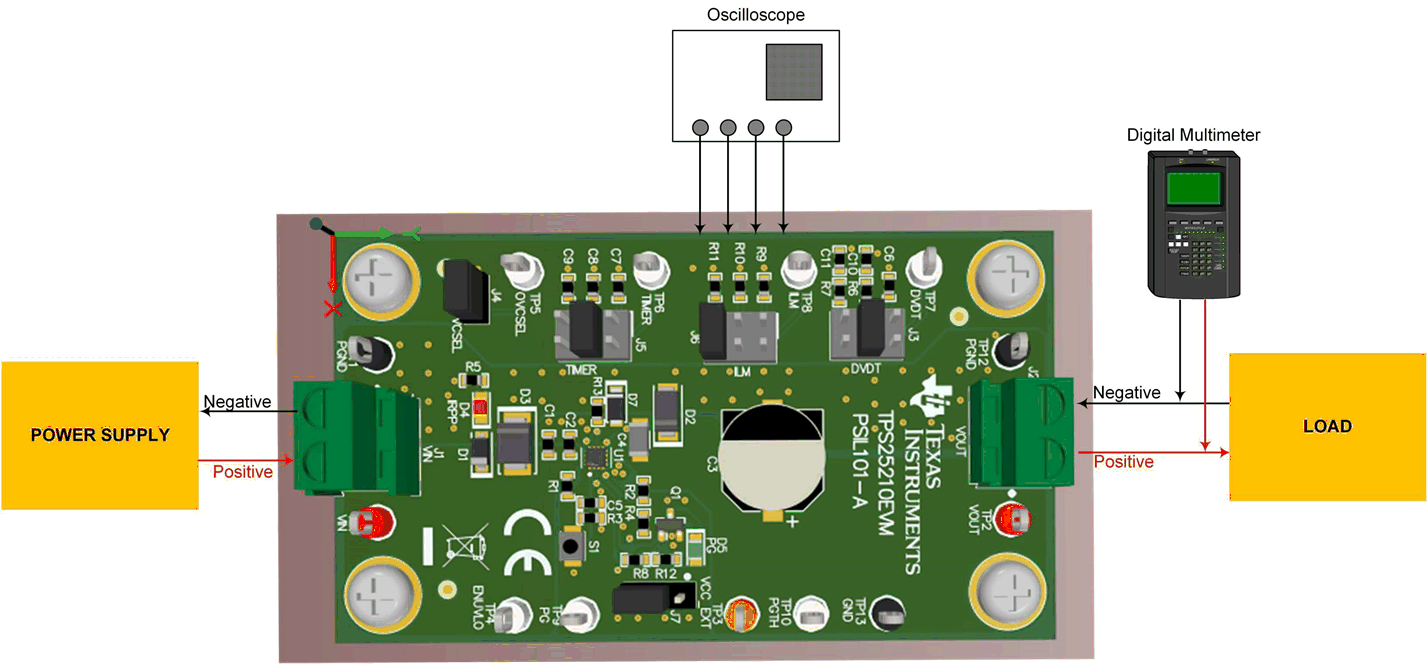SLVUC34 March 2021 TPS2521
5 Test Setup and Procedures
In this user's guide, the test procedure is described for TPS25210A and TPS25210L devices. Make sure the evaluation board has default jumper settings as shown in Table 5-1. The default under voltage lock out (UVLO) setting is at 4.5 V for this evaluation board. Therefore, the resistances R3 and R4 should be changed to 200 kΩ for the performance evaluation of TPS25210x device at VIN of 3.3 V.
Table 5-1 Default Jumper Setting for TPS25210EVM eFuse Evaluation Board
|
J3 |
J4 |
J5 |
J6 |
J7 |
|---|---|---|---|---|
|
3-4 | No jumper | 3-4 | 5-6 | 2-3 |
 Figure 5-1 TPS25210EVM Setup with Test Equipment
Figure 5-1 TPS25210EVM Setup with Test EquipmentFollow these instructions before starting any test and repeat again before moving to next test:
- Set the power supply output (VIN) to zero volts.
- Turn ON the power supply and set the power supply output (VIN) to 5 V, current limit to 10 A.
- Turn OFF the power supply.
- Set the jumper setting on EVM to default position as shown in Table 5-1.